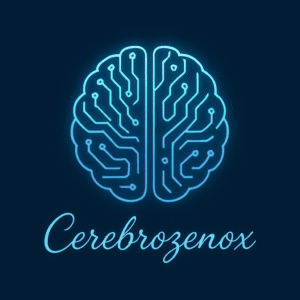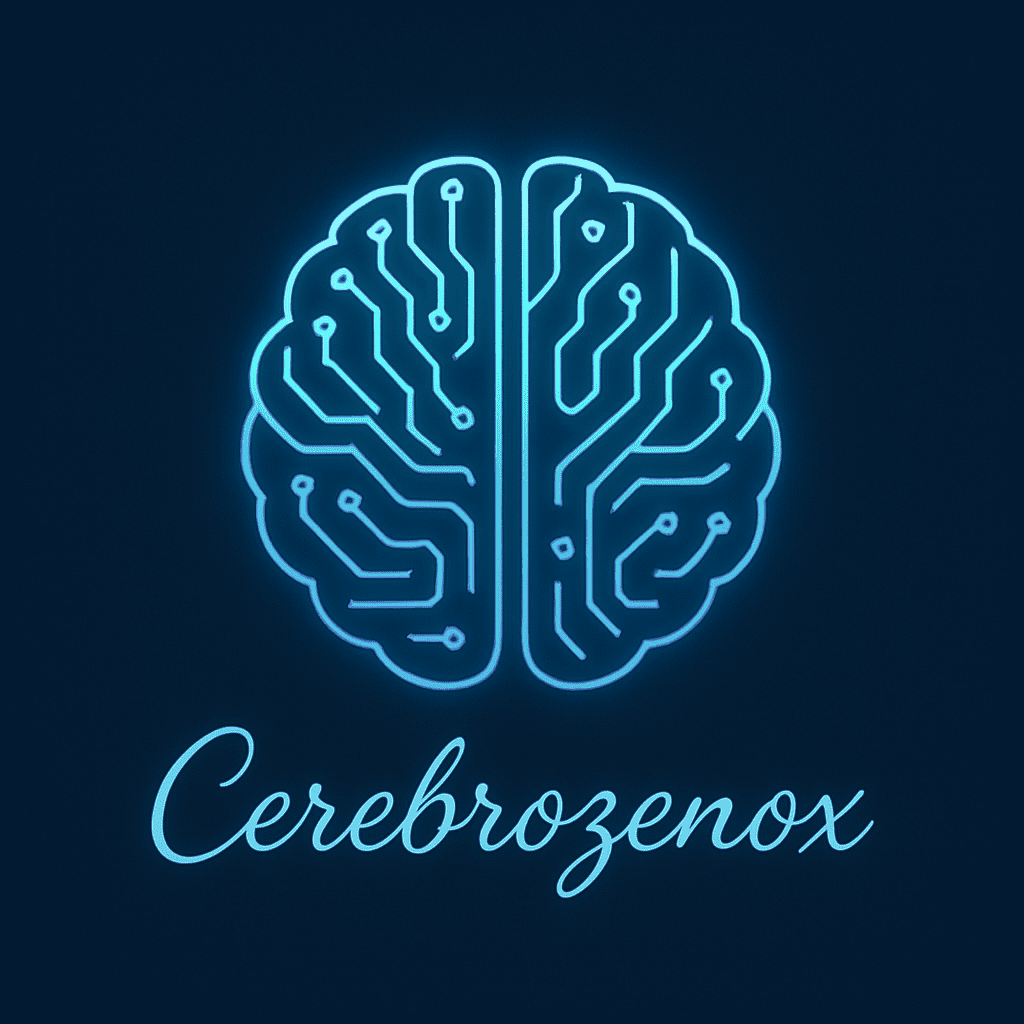With every passing day, Artificial Intelligence (AI) is transforming our lives and has become one of the most talked-about technologies, making our lives more easy and personalized. However, it may sound very useful in future or even intimidating to some. Some might argue that AI is making humans redundant due to automation by taking over every human task, and some say that it’s a game-changer that frees humans from the mundane tasks of our daily lives. But the truth is that AI technology is already woven into the fabric of our everyday routines. From unlocking your phone with a facial recognition feature to getting personalized video clip suggestions on YouTube or Spotify, AI tools quietly power platforms we use daily, showing how advanced artificial intelligence development has become.
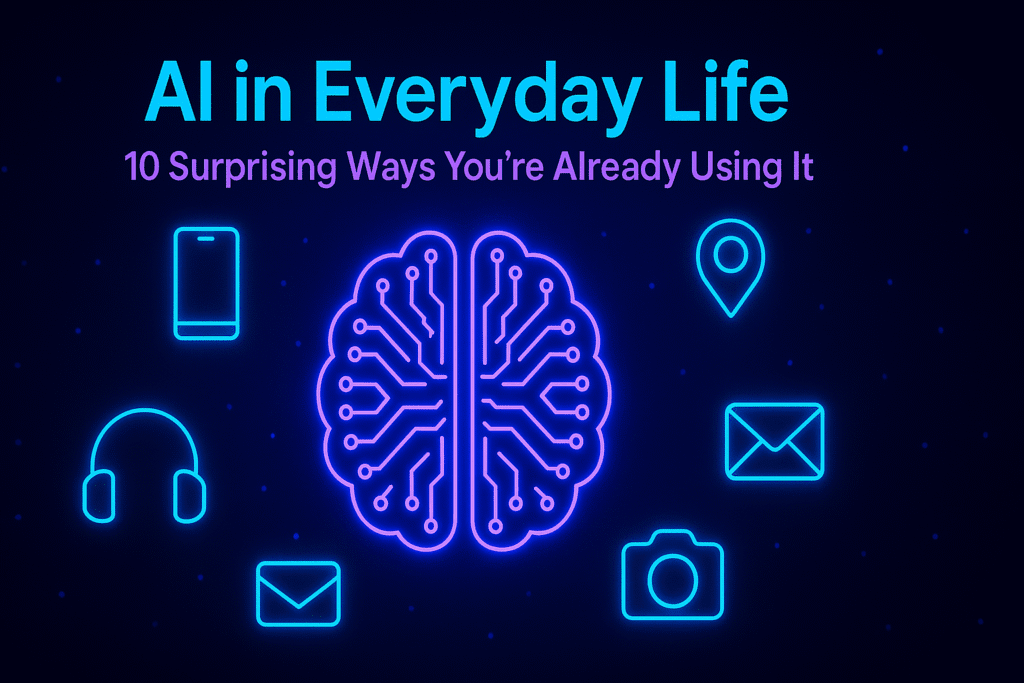
This article explores ten surprising ways AI is in daily life that you may not even realize you’re already engaging with. After reading this article, you’ll understand how artificial intelligence applications are making your daily life activities more efficient, easy, and personalized as part of an evolving AI system.
1. AI Voice Assistants
“Hey Alexa, “Turn on the light, “Okay Google,” “Siri, Set an alarm for 7 am.” Sound familiar? These familiar voices and commands are actually AI-powered voice assistants utilizing Natural Language Processing (NLP) and Machine Learning algorithms. These voice assistants are incredibly smart and versatile, and the type of commands we give them depends on their capabilities and the devices they are connected with.
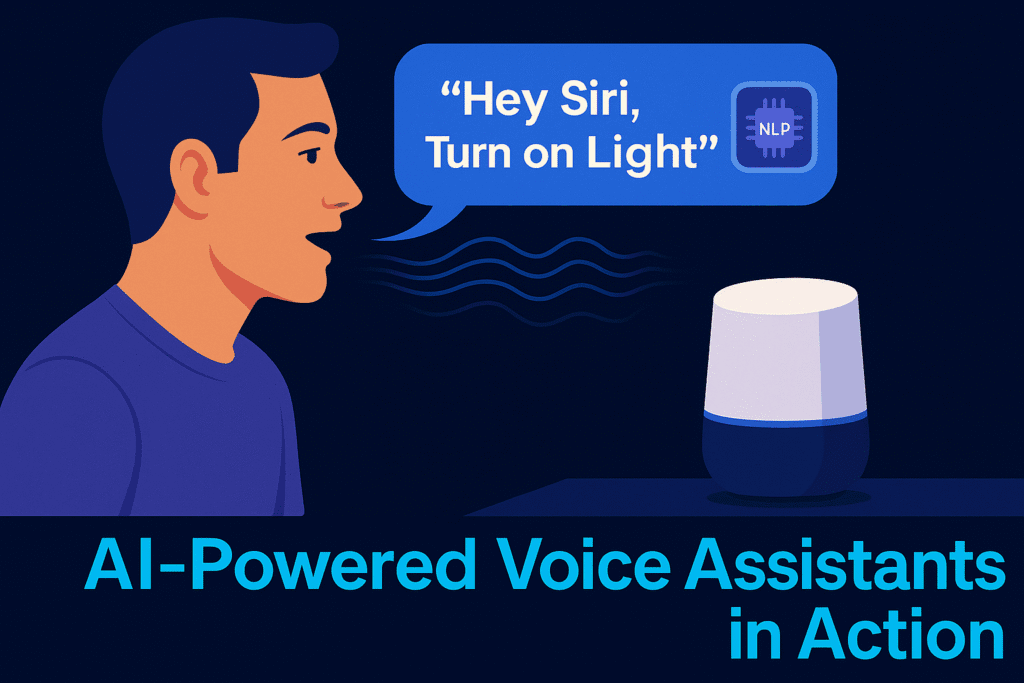
Whether you’re sitting in a chair and do not want to leave your seat to turn on the light, you are just a few words away from your desired action to be performed; you can even get general information, check the weather, set reminders, or managing smart home automation devices, you’re interacting with complex artificial intelligence programs daily. These AI Assistants like Siri, Google Assistant, Microsoft Cortana, and Alexa use AI algorithms to understand spoken commands, recognize users, perform actions, and give predictions. This shows the seamless integration of artificial intelligence in communication within your daily life.
2. AI Email Filters: A Defence against Spam
When you open up your email every morning you see the email inbox is clean and organized. Have you ever thought why? The answer lies in AI-based email filters that rely on sophisticated artificial intelligence algorithms and employ various techniques to defend against spammer’s IP addresses by consulting their databases. These AI filters do content analysis, filter inappropriate and spam content, and analyze emails to identify suspicious patterns, keywords, and phrases. AI models learn from labelled datasets to recognize spam characteristics and adapt to new tactics by Machine Learning. AI identifies patterns in spam emails, such as similar subject lines or sender-sent items.

AI models remain effective and accurate in their predictions and classifications against spa detection and threat detection by Machine learning. AI-powered filters can learn the standard email patterns for individuals or organizations. Suppose these filters find any significant deviation from this norm or any unusual volume of emails, inappropriate keywords, emails from a previously unknown sender, or emails with unexpected content. In that case, they can trigger a closer inspection. Gmail platform also uses AI in email services to categorize email message boxes into primary, social, promotions, and spam folders. These filters use AI algorithms that adapt to your preferences, ensuring efficient email organization using AI and representing an essential AI application in communication.
3. Netflix, YouTube & Spotify: Personalized Recommendations Engine
Every time you open an app, you see the same ad, even on different platforms. Even if you are not interested in making a purchase, you will still see the ad you once clicked on; this is due to the AI algorithm. It happens because AI algorithms analyze your viewing history, and according to your preferences, it suggests duplicate content, either video content or any ad in which you had previously shown an interest. For example, when Netflix recommends a series you binge-watch or Spotify queues up the playlist for you that you unintentionally clicked someday, it’s not a coincidence; it’s AI that analyses your behavioural pattern of entertainment because you were the active user of Netflix and Spotify. AI studies the behaviour and experience of its users and suggests the same thing to you by analyzing search queries and user-generated playlists.
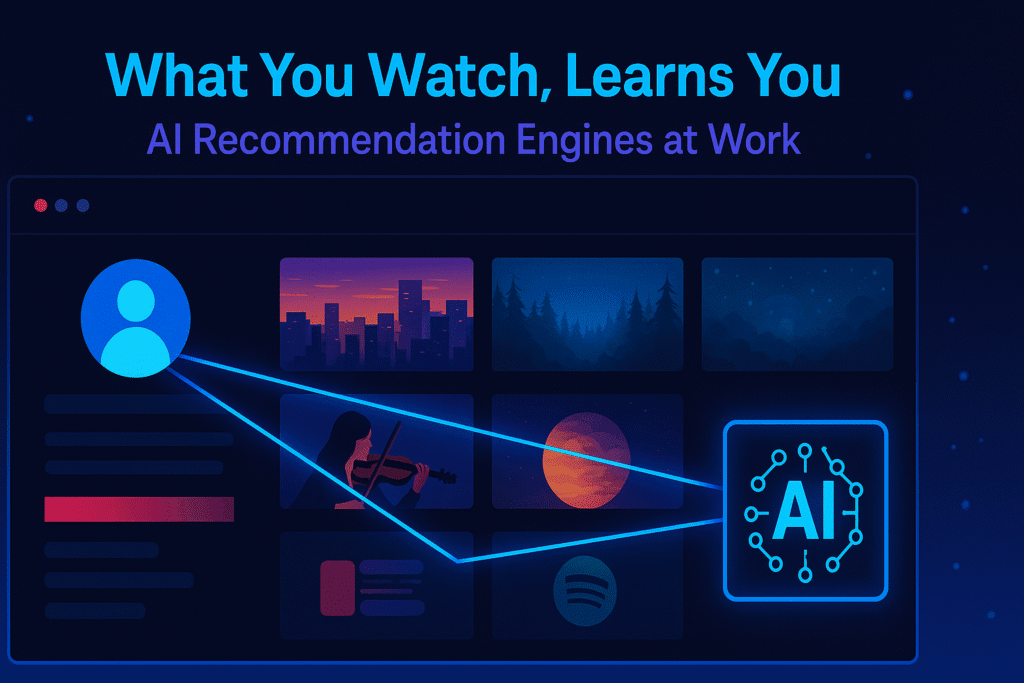
These platforms utilize deep learning and AI personalization to analyze your viewing data, reviews, and even listening habits. The YouTube songs you played one week ago will come to your playlist again, and you can play them without browsing. You will see the content according to your interests and tastes from powerful engines like Spotify and Netflix AI, proving how AI is doing wonders in entertainment-enhancing user experiences.
4. AI in Biometric Authentication
Unlocking your device instantly at a glance? This is AI in action. Unlocking your phone by typing long passwords now seems a difficult task, and everyone is trying to unlock the phone using AI sensors and scanners. Your phone now captures the fingerprint images of your fingers for biometric authentication and facial recognition technology to unlock your phone. Smartphones now use AI mobile features that turn biometric data into secure, unique identities. All such fraudulent and malicious activities can be reduced by using such AI powered devices that support cybersecurity.

5. AI takes the wheel in Transportation
The potential of AI in the transportation sector is undergoing a radical transformation. Artificial Intelligence is redefining the transportation sector by tackling traffic congestion by optimizing routes, addressing long-standing and awaiting challenges, predicting traffic patterns, and streamlining ride-sharing services. The real example is Google Maps’s rerouting feature, which gives you an alternative route; you have a personal traffic guru in your pocket. AI sensors drive self-driving cars and buses, and this system integrates data from many sensors like radars, Lidar, cameras, and ultrasonic sensors to create a real-time 360-degree understanding of the environment, detecting obstacles, pedestrians, traffic signals, and other vehicles. For example, Uber’s ETA (Estimated Time of Travel) accuracy system. It’s like you are having a watch that predicts your arrival time. Such apps use predictive modelling, real-time data analysis, and AI decision-making to improve route accuracy and rider-driver matching. This is a significant shift towards automation. AI sustainability towards the reduction of carbon emissions by optimizing routes, improving logistics, and promoting ride-sharing is remarkable. This is a win-win for both our environment and wallets. From AI in Google Maps to ride-sharing AI, these systems are driven by real-time data with AI and massive artificial intelligence AI capabilities that deliver accuracy, speed, and convenience.
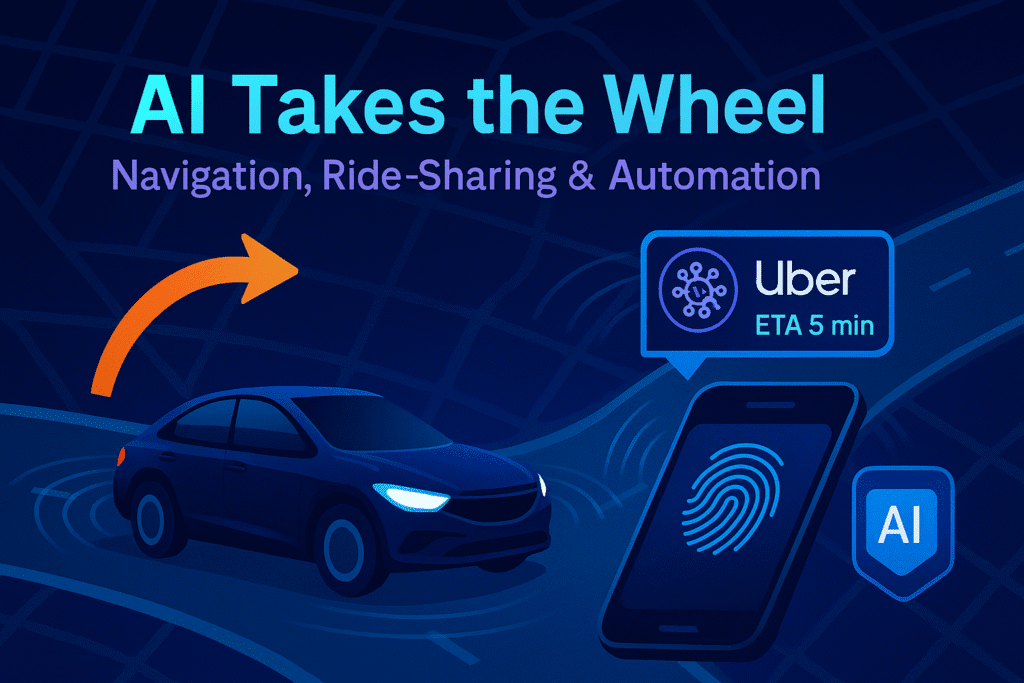
6. AI Behind the Lens: Photo filters and smart cameras
Applications of AI in photography make us all wonder because it revolutionizes how we capture our beautiful memories. With features like automatic lighting adjustment, portrait mode that blurs the background, and smile detection. Such AI features are making photo sessions more intuitive and accessible; it’s like you are having your personal photographer by your side.
AI-powered cameras can now identify scenes, detect subjects, and automatically adjust settings accordingly by improving quality instantly. These subject identification and scene detection features are game-changers because these AI features are helpful, especially in bad lightning conditions or when capturing complex scenes.
Apps like Snapchat and Instagram use augmented reality and AI visual processing to overlay filters; they can even create avatars by tracking your facial expressions and features. You can enhance the photo quality with AI-powered editing tools, remove the background noise, and add sound from your playlist options.

AI-powered image sorting is another example of Google photos in our smartphones, how AI improves visual content management and sorts photos according to the days and arranges in folders accordingly. This feature is a productivity booster and time saver. As AI technology evolves continuously, we can expect even more innovative applications in photography in the near future. The possibilities of new inventions are going to be endless in photography and AI content creation.
7. AI in Shopping and E-commerce
Ever wondered how online stores approach you and seem to read your mind on different social media platforms? They’re using AI Algorithms to show you products that match your interests and preferences by tracking your clicks and search history. It’s like you have a personal shopping assistant who knows exactly what you’re looking for and your interests using predictive analysis and customer behaviour modelling.
AI is revolutionizing customer’s online shopping experience by personalizing product suggestions by tracking your browsing history to recommend products you would love to purchase. The AI-powered chatbots are trained to provide instant customer support by answering queries and helping with orders across different platforms.
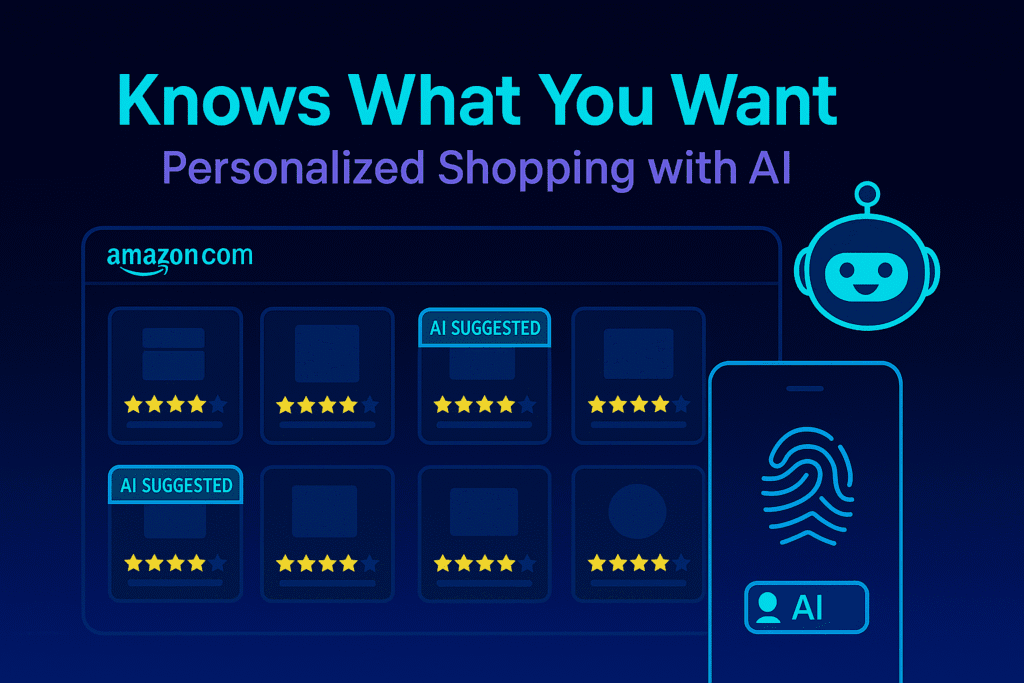
The future of e-commerce is AI-driven. It will benefit online customers and business people by enhancing customer experience and increasing efficiency by automating mundane tasks to free up time for businesses to focus on growth and innovation. AI can read customer behaviour, providing data-driven insights for multiple ventures to improve their business strategies.
8. AI is breaking Language barriers by translation Apps
When you travel to a new country and you have to interact with their native people, you feel challenged due to the unfamiliar surroundings. In such cases, you can use translational apps like Google Translate or Microsoft Translator, breaking language barriers is the most significant benefit of AI. These apps are transforming the way we communicate across different languages. These AI-powered translation apps and tools rely on natural language processing (NLP) and machine intelligence to accurately translate text and speech and create real-time conversations across languages. Imagine conversing with someone in real time despite having language barriers with different native speakers. These tools and apps give you multiple benefits by making it easy to communicate while travelling or interacting with people living in other countries speaking different languages. By bridging the language gap, AI facilitates people in international collaboration in education, business, and research. These translational apps are game-changers, so these AI technologies has the potential to break cultural and linguistic barriers, fostering cooperation with people from different countries.
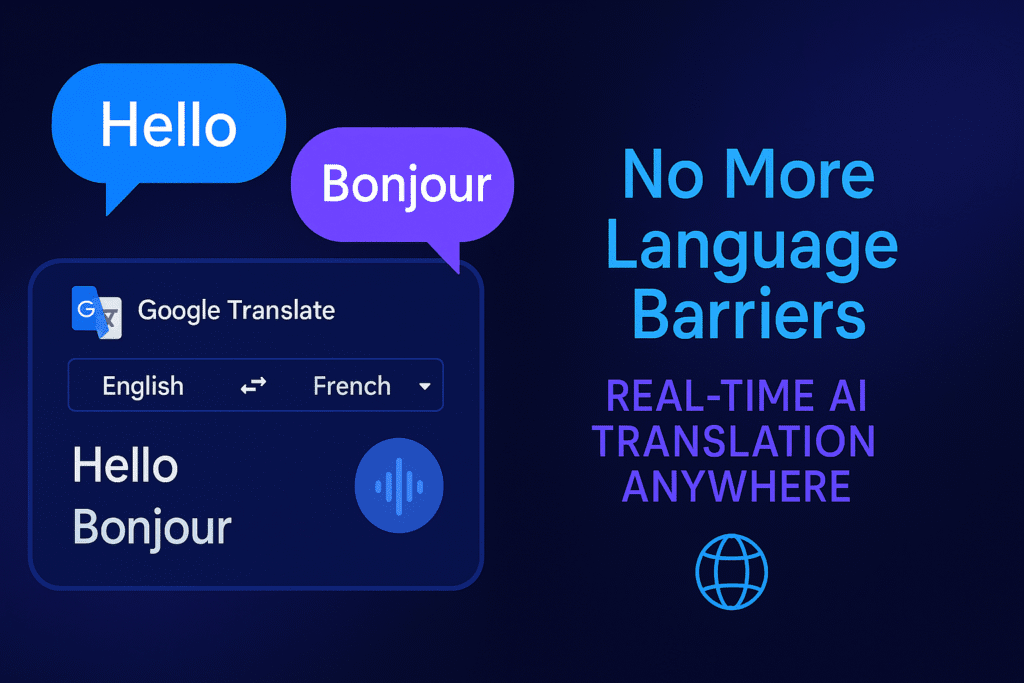
9. AI as a Virtual Assistants
To make your workflow more organized and quick, AI has done wonders as a virtual assistant. If you dive deep into the world of AI virtual assistants like Notion AI, clickon, Microsoft’s Copilot; these tools are designed to make your workflows more organized and streamlined. These tools are best for project management. These AI systems help us stay focused and manage our time more efficiently, whether scheduling meetings, taking notes, or managing to-do lists. AI virtual assistants enhance work productivity by scheduling meetings, adjusting calendars, and sending reminders. For example, Notion AI can help prioritize tasks, set deadlines, and track progress.
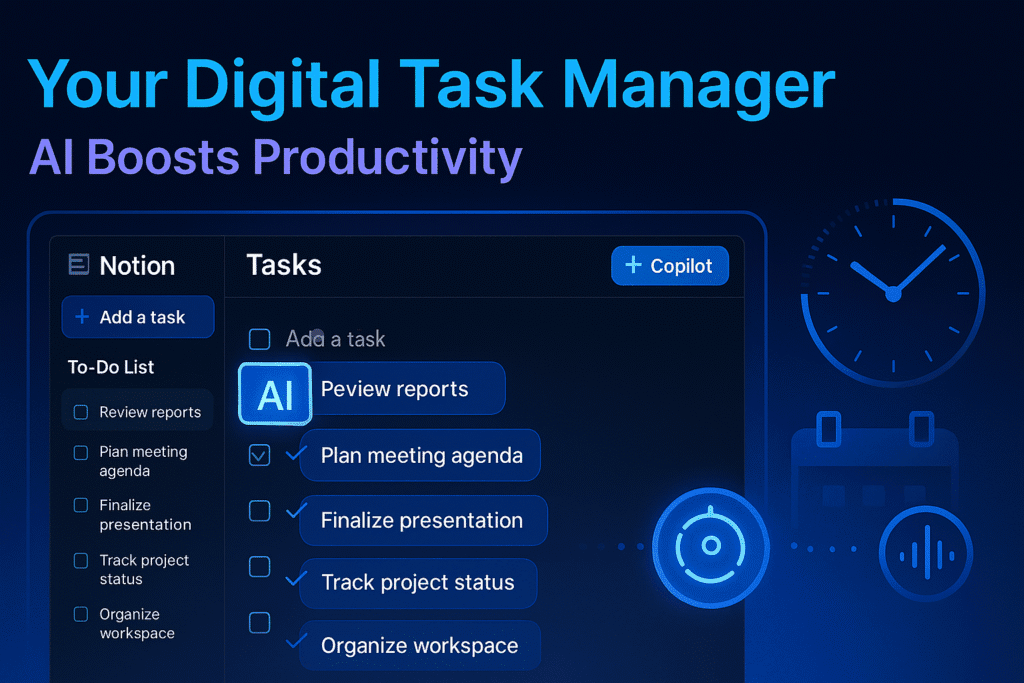
The future of productivity is looking brighter with these AI virtual assistants as we can work smarter, not harder, by automating routine tasks, learning our habits and preferences, and providing tailored support. Thinking about the possibilities is exciting because the future is full of AI-driven and automation strategies.
10. AI in Online Fraud Detection and Banking Alerts
Everyone in today’s digital world must stay ahead of cyber threats and digital vulnerabilities by making themselves aware of innovative AI technologies. To combat these malicious attacks, AI-powered systems are revolutionizing how financial institutions can detect fraud and prevent digital dangers. But the question is how it works. These Algorithms analyze vast amounts of data, detecting patterns and anomalies in real-time that enable financial institutes to flag any suspicious transaction by verifying their identity. These systems can identify unusual activities, such as transactions from unknown locations or large purchases. To confirm these unfamiliar identities, Behavioral biometrics, like keystroke recognition and mouse movements, help verify user identity and prevent theft. Imagine a security system monitoring your typing rhythm and mouse habits, and they can detect your behavior and easily detect theft by verifying your identity. AI can manage other operations like loan approvals and risk assessments, making financial services more efficient and transparent. We can expect advanced finance applications from AI shortly, such as Predictive analytics and Personalized banking.
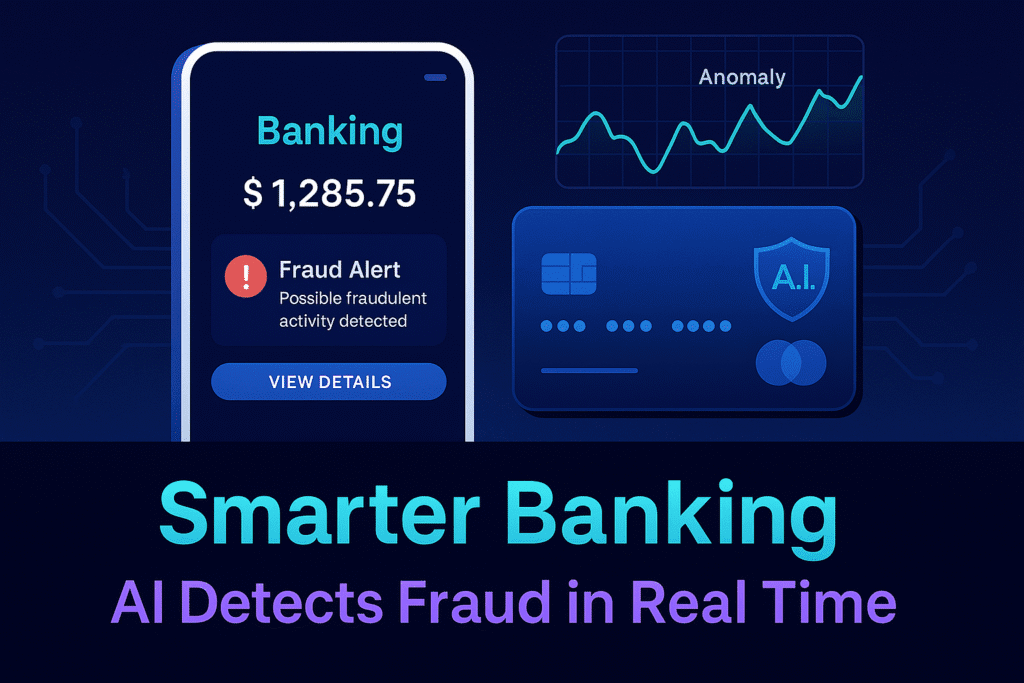
AI in Healthcare and Education is a Bonus
Due to the limited medical advancements in technology and AI in the past, patients often faced significant challenges, and complex surgeries had lower success rates. But now things have changed, and AI has had a transformative impact on the healthcare and education sectors. AI-powered machines can now detect complex disorders and abnormalities by analyzing medical images, lab results, and patient data to support accurate diagnosis. It can help tailor treatment plans for the patient by improving outcomes and reducing the cost of surgeries. The AI-assisted robotic systems can enhance surgical precision, reducing recovery time and complications. Beyond everyday tools, AI in healthcare and education transforms lives by setting profound examples.
The Education sectors are performing better through adaptive learning by adjusting to individual learning styles, pace, and needs. Auto grading systems can help teachers with grading and freeing their time for more complex and high-value tasks.
Conclusion
AI is transforming various industries and aspects of life, so rather than fearing artificial intelligence, we need to accept AI as a friend, not a foe, because it’s time to embrace it as a powerful ally. From everyday life to high-impact industries, AI technology simplifies tasks and enhances personal and professional experiences by improving efficiency and accuracy.
As we become more informed, we can better leverage our time in various aspects and fields like AI content creation, AI marketing, and other tools to take action, whether you’re trying to build your online business, make passive income online, or become fluent in the AI language.
If you want more AI Insights?
Subscribe to our newsletter and get A free AI Starter Guide eBook

Make plans to grow your small business ventures, start making money and create passive income online using Artificial intelligence applications.
Stay ahead of the curve because the Future of AI and AI in Tech is already here.
FAQ’s
1. What are some daily life examples of AI in our life?
Examples of daily life examples of AI include voice assistants like Siri, spam email filters, Netflix recommendations, Google Maps navigation, and smartphone facial recognition. These AI applications make everyday tasks more efficient and personalized.
2. How does AI technology personalize my online experience?
AI technology uses behavioural pattern analysis and machine learning algorithms to understand your preferences and suggest content, products, or actions tailored to your habits and browsing history. This is seen in platforms like Spotify, Amazon, and Netflix AI.
3. How does artificial intelligence play a role in cybersecurity?
AI in cybersecurity helps detect threats in real time, flag suspicious activities, and secure biometric data through technologies like facial recognition and AI-driven decision-making in apps and devices.
4. How does AI improve online shopping experiences?
Artificial intelligence in e-commerce enhances user experience by offering personalized shopping with AI, faster checkouts, product recommendations, and AI chatbots for customer service, all powered by predictive analytics.
5. Is AI safe to use in healthcare and education?
Yes, AI in healthcare and AI in education are used under strict regulations to ensure safety and privacy. AI supports doctors with diagnostics and enables adaptive learning platforms for students, showing how AI for good can transform critical sectors.
6. Can I use AI to grow my business or make money online?
Absolutely. AI can help you build your online business, improve marketing, automate customer service, and even create passive income online through smart content creation and audience targeting tools.
